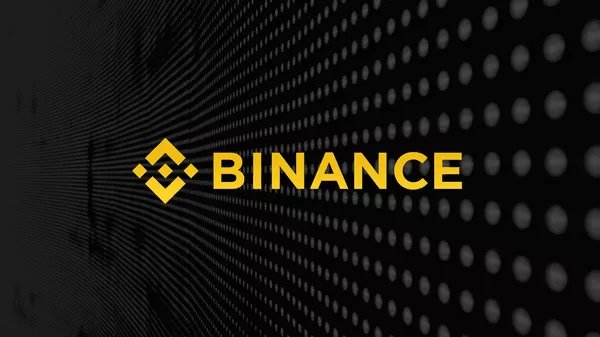In the expansive world of cryptocurrency, Binance stands out as one of the largest and most popular cryptocurrency exchanges. For individuals venturing into the realm of digital assets on Binance, the question often arises: do you need a crypto wallet with Binance? In this article, we’ll explore the intricacies of using Binance and the role of crypto wallets in enhancing the security and control of your digital assets.
Binance: A Cryptocurrency Exchange Powerhouse
At its core, Binance is a cryptocurrency exchange that facilitates the buying, selling, and trading of various digital assets. With a user-friendly interface and a comprehensive range of supported cryptocurrencies, Binance has become a go-to platform for both novice and experienced cryptocurrency enthusiasts. However, understanding the necessity of a crypto wallet in conjunction with Binance requires a closer look at the functionalities and offerings of both.
Binance Spot Wallet: Basics and Security Measures
When users create an account on Binance, they are automatically provided with a Binance Spot Wallet. This wallet is an integral part of the Binance platform and is used to store cryptocurrencies available for spot trading. Spot trading refers to the immediate exchange of one cryptocurrency for another at the current market price.
The Binance Spot Wallet is secure, employing advanced encryption and authentication measures to safeguard user funds. However, it’s essential to recognize that the Spot Wallet is part of the Binance exchange platform and is, therefore, subject to the security infrastructure implemented by Binance.
Hot Wallets vs. Cold Wallets: Understanding the Distinction
In the context of Binance, it’s crucial to differentiate between hot wallets and cold wallets. The Binance Spot Wallet is an example of a hot wallet, meaning it is connected to the internet and is suitable for active trading and quick access to funds. Hot wallets provide convenience but may be more susceptible to hacking attempts compared to cold wallets.
In contrast, a cold wallet is an offline storage solution that keeps digital assets disconnected from the internet, enhancing security by minimizing exposure to potential online threats. While Binance itself offers a secure hot wallet for spot trading, some users may opt for the additional security provided by a cold wallet for long-term storage of their cryptocurrencies.
Benefits of Using a Separate Crypto Wallet with Binance
While the Binance Spot Wallet offers a secure environment for spot trading, there are compelling reasons why users may consider using a separate crypto wallet in conjunction with Binance.
1. Enhanced Security: Cold wallets, such as hardware wallets or paper wallets, provide an extra layer of security by keeping the private keys offline. This significantly reduces the risk of unauthorized access or hacking attempts.
2. Control and Ownership: With an external wallet, users have full control and ownership of their private keys. This is in contrast to an exchange wallet where the exchange retains control over the private keys. Owning your private keys gives you the ability to access your funds independently of the exchange.
3. Diversification: Using an external wallet allows users to diversify their storage solutions. While the Binance Spot Wallet may be suitable for active trading, a cold wallet can be used for long-term storage, adding a layer of diversification to the overall security strategy.
4. Peace of Mind: Holding a significant amount of cryptocurrencies on an exchange, even a reputable one like Binance, may introduce an element of concern for some users. Utilizing a separate wallet provides peace of mind, especially in the event of unforeseen circumstances affecting the exchange.
How to Use an External Wallet with Binance?
If you decide to use an external wallet in conjunction with Binance, the process is relatively straightforward. Binance allows users to withdraw their cryptocurrencies to an external wallet address. Whether it’s a hardware wallet, software wallet, or another type of cold storage, users can initiate withdrawals from their Binance account to the desired external wallet address.
It’s essential to double-check the accuracy of the withdrawal address and ensure that the selected wallet supports the specific cryptocurrencies being withdrawn. Additionally, users should be mindful of withdrawal fees associated with different cryptocurrencies and adjust their preferences accordingly.
See Also: What is pool wallet in Binance: A Comprehensive Guide
Conclusion
In conclusion, while the Binance Spot Wallet provides a secure environment for spot trading, the decision to use an external crypto wallet depends on individual preferences, risk tolerance, and long-term storage needs. Utilizing a separate wallet offers enhanced security, control, and peace of mind, especially for those holding significant amounts of cryptocurrencies.
Whether you choose to rely solely on the Binance Spot Wallet for active trading or opt for the additional security of an external wallet, it’s crucial to stay informed about best practices for securing your digital assets. The evolving landscape of cryptocurrency requires users to adapt and adopt strategies that align with their individual goals and risk profiles. Ultimately, the synergy between Binance and external wallets empowers users to navigate the crypto space with confidence and control over their financial assets.
Related topics:
- Can Binance Wallet Transactions Be Traced: What You Need To Know
- Trust Wallet Binance: A Guide to Secure Cryptocurrency Storage
- The Fiat Wallet on Binance: What You Need to Know

















